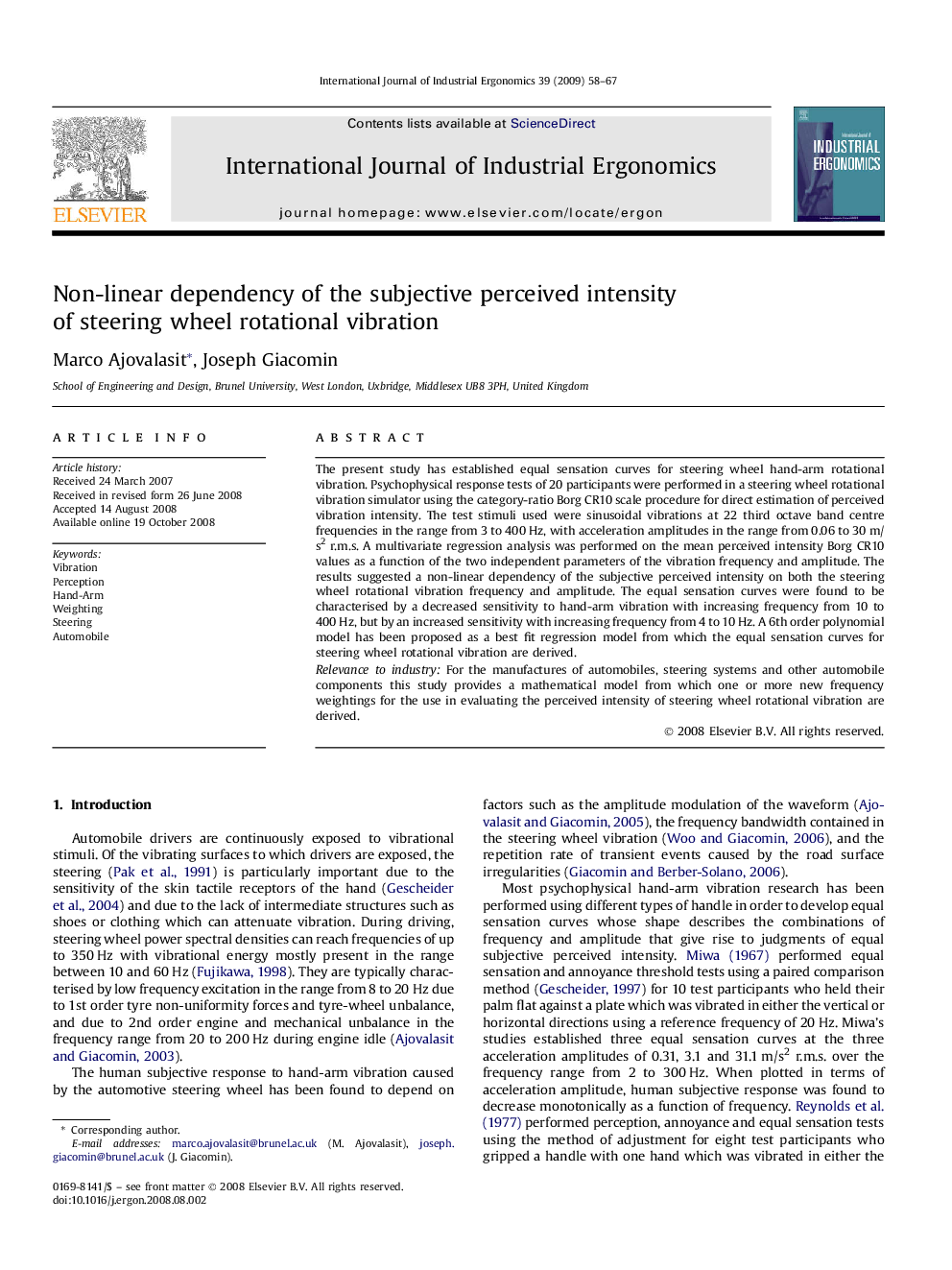| Article ID | Journal | Published Year | Pages | File Type |
|---|---|---|---|---|
| 1096251 | International Journal of Industrial Ergonomics | 2009 | 10 Pages |
The present study has established equal sensation curves for steering wheel hand-arm rotational vibration. Psychophysical response tests of 20 participants were performed in a steering wheel rotational vibration simulator using the category-ratio Borg CR10 scale procedure for direct estimation of perceived vibration intensity. The test stimuli used were sinusoidal vibrations at 22 third octave band centre frequencies in the range from 3 to 400 Hz, with acceleration amplitudes in the range from 0.06 to 30 m/s2 r.m.s. A multivariate regression analysis was performed on the mean perceived intensity Borg CR10 values as a function of the two independent parameters of the vibration frequency and amplitude. The results suggested a non-linear dependency of the subjective perceived intensity on both the steering wheel rotational vibration frequency and amplitude. The equal sensation curves were found to be characterised by a decreased sensitivity to hand-arm vibration with increasing frequency from 10 to 400 Hz, but by an increased sensitivity with increasing frequency from 4 to 10 Hz. A 6th order polynomial model has been proposed as a best fit regression model from which the equal sensation curves for steering wheel rotational vibration are derived.Relevance to industryFor the manufactures of automobiles, steering systems and other automobile components this study provides a mathematical model from which one or more new frequency weightings for the use in evaluating the perceived intensity of steering wheel rotational vibration are derived.
